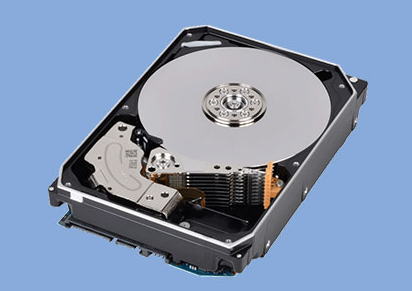One critical aspect of hardware health is the temperature at which it operates. Overheating is a common issue that affects the overall performance and lifespan of computer components, particularly the hard disk drive (HDD). A “Hard Disk Temperature Too High” pop-up is an alarming message that notifies the user of an issue that could lead to data loss or hardware failure if not addressed promptly.
1. Hard Disk Temperature
Hard disk drives (HDDs) are sensitive to temperature changes. While modern hard drives are designed to withstand certain ranges of heat, excessive temperatures can cause irreversible damage. The temperature of a hard drive is monitored by sensors within the drive, and when it exceeds the recommended threshold, the system will usually trigger a warning message, such as “Hard Disk Temperature Too High.”

Normal Temperature Ranges for HDDs
Idle Temperature: In a relatively low workload state (such as when the system is not being heavily used), a hard disk should ideally maintain a temperature between 30°C and 40°C.
Load Temperature: During intense usage, like running demanding programs or storing large amounts of data, temperatures can rise to 40°C to 50°C.
Critical Temperature: A temperature of above 55°C is considered high and could cause issues such as slow performance, system crashes, or eventual failure.
While these values can vary slightly depending on the model of the hard disk and its environment, it is generally accepted that anything above 50°C to 55°C for prolonged periods should be considered a serious concern.
2. Causes of High Hard Disk Temperature
Before we jump into the solutions, it’s important to understand the root causes of high temperatures in hard drives. Identifying the cause can help prevent future occurrences.
2.1 Poor Airflow in the Computer Case
One of the most common reasons for high hard disk temperatures is inadequate airflow within the computer case. If the internal components are not receiving sufficient ventilation, the system can overheat, especially during prolonged use.
Case Fans: Without adequate cooling, the hard disk and other internal components may become subject to high temperatures. Case fans help to dissipate heat but must be properly positioned to ensure that airflow is directed effectively through the case.
Fan Failure: If the system’s cooling fans are not functioning properly, the system is more likely to experience heat buildup.
2.2 Overuse or High Workload
When a hard disk is working excessively, whether due to heavy applications, file transfers, or other resource-heavy tasks, the temperature will naturally rise. While this is expected behavior, prolonged periods of high workload without a break can strain the drive and lead to overheating.
2.3 Dust and Debris
Dust and debris that accumulate inside the computer case can obstruct airflow and cause the internal components, including the hard disk, to overheat. Dust buildup on fans and vents can significantly reduce the cooling efficiency of the system.
2.4 Poor Ventilation or Location
If the computer is placed in an environment that doesn’t allow for adequate air circulation, such as in a cramped desk or near a heat source, the hard disk temperature is likely to increase. External factors like room temperature can also contribute to the issue.
2.5 Faulty Hard Drive or Aging Hardware
An old or failing hard drive may have trouble regulating its temperature. Mechanical issues within the disk, such as worn-out bearings or other internal components, could cause the drive to heat up more than usual.
3. How to Monitor Hard Disk Temperature
Monitoring the temperature of your hard drive is crucial for both preventing overheating and diagnosing existing problems. Fortunately, there are several ways to check the temperature of your hard disk.
3.1 Using Built-in Software Tools
Most modern operating systems provide tools or utilities to monitor hardware performance, including the temperature of the hard disk.
Windows: In Windows, you can use the built-in tool called “CHKDSK” to perform a basic health check on your disk. However, for temperature monitoring, you will need third-party software such as CrystalDiskInfo or HWMonitor.
macOS: macOS does not have a built-in tool for monitoring hard disk temperature, but third-party apps like iStat Menus can provide real-time temperature data.
Linux: Tools like smartmontools and hddtemp can be used to monitor the hard disk temperature on Linux systems.
3.2 Using Third-Party Software
For more detailed monitoring, there are many third-party software solutions available for both Windows and macOS users. Some of the most popular tools include:
CrystalDiskInfo: A free, easy-to-use utility for Windows that provides detailed information about hard drive health, including temperature, SMART status, and more.
HWMonitor: A hardware monitoring tool that supports a wide range of sensors, including temperature sensors for your HDD, CPU, and other components.
SpeedFan: Another useful tool for monitoring temperatures and controlling fan speeds to optimize cooling.
AIDA64: A comprehensive system diagnostic tool that provides temperature data, including hard disk temperatures, in a user-friendly interface.
3.3 Using BIOS or UEFI
For users who prefer not to install third-party software, it’s possible to check the hard disk temperature through the BIOS/UEFI of your system. Most modern BIOS versions offer a hardware monitoring section where you can view the temperature of your hard disk and other components.
4. Resolving the “Hard Disk Temperature Too High” Issue
Now that we understand the causes and how to monitor the temperature, it’s time to look at solutions for resolving this issue. Below are several steps to mitigate and prevent high hard disk temperatures:
4.1 Improve System Cooling
Add More Fans: Ensure your system has enough fans to promote airflow. Ideally, you should have at least one intake fan and one exhaust fan, placed in such a way as to create a direct airflow path across your components.
Upgrade Fans: If the fans in your case are old or ineffective, upgrading them to more powerful or quieter models can help improve airflow and cooling.
Check Fan Placement: Ensure the fans are positioned correctly, with one drawing in cool air and another expelling warm air. Poor fan placement can create turbulent airflow and reduce cooling efficiency.
4.2 Clean the Computer Case
Dust buildup inside the computer can severely impact airflow and cause temperatures to spike. Regularly clean the inside of your computer case to remove dust and debris, especially from the fans and vents. Use compressed air to blow out dust from hard-to-reach areas.
4.3 Improve the Location of the Computer
Consider moving the computer to a location with better ventilation. Avoid placing it near heat sources like radiators or direct sunlight, and make sure there’s enough space around the case for proper airflow.
4.4 Optimize Your Hard Drive Usage
If you’re using your hard disk for heavy tasks such as large file transfers, consider scheduling these tasks during cooler parts of the day or splitting them into smaller tasks to avoid overloading the drive.
4.5 Install Cooling Pads or External Cooling Solutions
For laptops, external cooling pads can be an effective solution to reduce the temperature. These pads often come with built-in fans and can significantly reduce the temperature of the laptop’s hard disk and other internal components.
4.6 Monitor and Adjust BIOS/UEFI Settings
Some systems allow you to adjust the speed of the internal cooling fans via the BIOS/UEFI. Check if you can increase fan speeds or configure your system to activate cooling at lower temperatures.
About us and this blog
Panda Assistant is built on the latest data recovery algorithms, ensuring that no file is too damaged, too lost, or too corrupted to be recovered.
Request a free quote
We believe that data recovery shouldn’t be a daunting task. That’s why we’ve designed Panda Assistant to be as easy to use as it is powerful. With a few clicks, you can initiate a scan, preview recoverable files, and restore your data all within a matter of minutes.
Subscribe to our newsletter!
More from our blog
See all postsRecent Posts
- How to search folder in file explorer 2025-05-09
- How to search for duplicates in file explorer 2025-05-09
- Finder search not finding files 2025-05-09

 Try lt Free
Try lt Free Recovery success rate of up to
Recovery success rate of up to









